This Week’s Game Ads A-Go-Go: “Strange and Devious Perhipherals”
Thursday, March 16th, 2006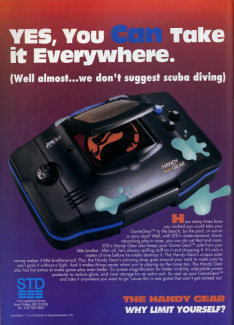

Mario Adventure FAQ v0.9
Written by Greg Head – Edited & Formatted for HTML by RedWolf
Table of Contents:
Section 1: Introduction & FAQ History
Section 2: What is Mario Adventure?
Section 3: Enemies
Section 4: Items
Section 5: Frequently Asked Questions (Hints & Tips)
Section 6: Level/Map Walkthroughs
Section 7: Key Locations
Section 8: Props
Section 9: Legal Notice
Section 1: Introduction & FAQ History
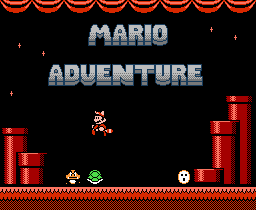 Mario Adventure is a ROM hack of Super Mario Bros 3 that’s so good that calling it a ROM hack is almost an insult. Think of it as “The Lost Levels” from Super Mario All-Stars, only based on SMB3 instead of SMB1. This game has totally new maps and levels, items, enemies, and surprises.
Mario Adventure is a ROM hack of Super Mario Bros 3 that’s so good that calling it a ROM hack is almost an insult. Think of it as “The Lost Levels” from Super Mario All-Stars, only based on SMB3 instead of SMB1. This game has totally new maps and levels, items, enemies, and surprises.
Like Lost Levels, Mario Adventure is hard. In fact, you’ll have to be able to beat SMB3 proficiently before you can really sink your teeth into this game. It’s full of intense and well-thought out levels, some of which will require you to build and refine strategies to complete. Some levels may leave you too frustrated to continue, and that’s where this FAQ comes in.
I like to think of this FAQ as a last resort. It’s better to do the game without outside help, but a little explanation can go a long way to understanding a level, and really, beating this game without any real cheating is a heck of a job well done. Check out the What is Mario Adventure? section to read all the changes between Mario Adventure and SMB3. The next two sections give details of the enemies and items in this game. The Frequently Asked Questions section contains lots of tips that apply to many situations in the game.
After that is the detailed Level/Map Walkthrough section, which gives tips on individual levels. Right now, only the first two and last two worlds are covered by the walkthrough, but the aforementioned Frequently Asked Questions section has tips that may help you through those levels.
After the walkthrough is the Key Locations section. Only peek at this one if you’ve given up on finding a key.
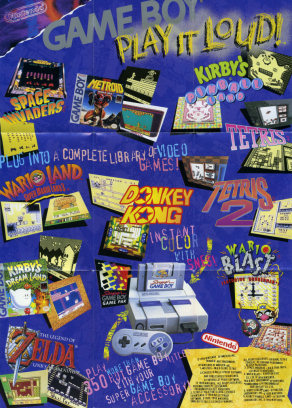
 Welcome back to RedWolf’s New Adventures in Famicom Land. Our latest trip takes us to an exciting island called “Akumajou Densetsu,” which promises to shower us with interesting music unlike any we’ve ever heard before on the Famicom or NES. That’s because Akumajou Densetsu, or the Japanese version of Castlevania III: Dracula’s Curse, uses the VRC6 chip, which provides for three extra sound channels (in addition to the Famicom’s original five). And Akumajou Densetsu utilizes those three extra channels brilliantly. Unfortunately, due to some hardware setup in the NES that I don’t understand, the US games could not utilize these extra sound channels. As a result, the music for Castlevania III had to be rewritten and simplified for the US release.
Welcome back to RedWolf’s New Adventures in Famicom Land. Our latest trip takes us to an exciting island called “Akumajou Densetsu,” which promises to shower us with interesting music unlike any we’ve ever heard before on the Famicom or NES. That’s because Akumajou Densetsu, or the Japanese version of Castlevania III: Dracula’s Curse, uses the VRC6 chip, which provides for three extra sound channels (in addition to the Famicom’s original five). And Akumajou Densetsu utilizes those three extra channels brilliantly. Unfortunately, due to some hardware setup in the NES that I don’t understand, the US games could not utilize these extra sound channels. As a result, the music for Castlevania III had to be rewritten and simplified for the US release.
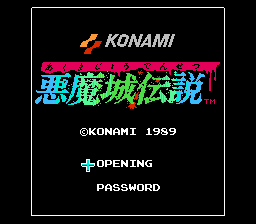 I had heard tales of how cool the music is, but I always wanted to hear for myself. So I bought a copy of Akumajou Densetsu recently and plugged it into my new AV Famicom. I was confronted with a flurry of new low bass notes and more complicated percussion. Sure, the music is nowhere near up to SNES snuff, but it’s an incredible experience nonetheless — Castlevania III’s music is some of the best on the NES. The rest of the game is the same as far as I can tell (except that, for some reason, the jumping “Igors” in the US version were changed from jumping demonic frog-like things in the Famicom one), so if you’re serious about Castlevania III, then it’s worth it to pick up this cart and a real Famicom to experience the music as originally intended. FCEU seems to emulate the music pretty well, but I highly recommend getting the real thing.
I had heard tales of how cool the music is, but I always wanted to hear for myself. So I bought a copy of Akumajou Densetsu recently and plugged it into my new AV Famicom. I was confronted with a flurry of new low bass notes and more complicated percussion. Sure, the music is nowhere near up to SNES snuff, but it’s an incredible experience nonetheless — Castlevania III’s music is some of the best on the NES. The rest of the game is the same as far as I can tell (except that, for some reason, the jumping “Igors” in the US version were changed from jumping demonic frog-like things in the Famicom one), so if you’re serious about Castlevania III, then it’s worth it to pick up this cart and a real Famicom to experience the music as originally intended. FCEU seems to emulate the music pretty well, but I highly recommend getting the real thing.
Jake, if you don’t have a copy of this, you should definitely get it.
 Starting today, I’ll be doing a weekly column called “Game Ads A-Go-Go” (the title was the GSW editor’s idea) over on the blog GameSetWatch that showcases good, bad, strange, funny, and interesting classic video game-related advertisements. My first column is on “Dumb Ads of the 90s” and is up now. Check it out!
Starting today, I’ll be doing a weekly column called “Game Ads A-Go-Go” (the title was the GSW editor’s idea) over on the blog GameSetWatch that showcases good, bad, strange, funny, and interesting classic video game-related advertisements. My first column is on “Dumb Ads of the 90s” and is up now. Check it out!
Most of the ads featured in the column will be scanned from my massive early 1990s game magazine collection that I recently unearthed from deep-earth storage (my parents’ basement). The column itself is a partnership between GSW and VC&G, actually more of an extension of VC&G-style content exclusively on GSW. Why? I guess it’s because we love each other so much (read: “I’ve been bribed with a lifetime supply of chili hot dogs”). But never you mind, and don’t you worry — the fresh content from VC&G will continue to flow just as readily as before.

All kidding aside, this is looks like an important library of video games. I wonder: if this room were discovered like some long-lost vault or tomb in the year 120,402 A.D. by our descendants after World War 15, what would they think of us?
Update: Read an interview with the owner of this collection and see more photos here.
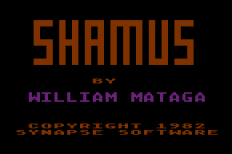 Simple but well-constructed, Shamus is one of my favorite games for the Atari 800. It’s an engaging experience…unless you see what I’m about to show you. That’s because the real enjoyment and challenge of Shamus as a game is mapping its unpauseable, implausible geometry.
Simple but well-constructed, Shamus is one of my favorite games for the Atari 800. It’s an engaging experience…unless you see what I’m about to show you. That’s because the real enjoyment and challenge of Shamus as a game is mapping its unpauseable, implausible geometry.
Shamus is a natural extension of Atari’s old Berzerk. Touch the wrong thing, and you die: an enemy, a bullet, or a wall. There’s even an Evil Otto equivalent, the Shadow, who comes to get you if you’re on a screen too long. But a fixed map, keys, and keyholes bring in an adventure element that Berserk doesn’t have.
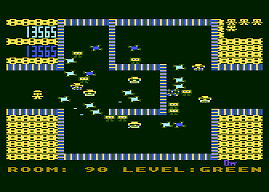 Now I could fill you in on all sorts of game details, but they won’t make much difference. Just blast your way through the maze, heading for room 127. The following tips, however, may help you choose your route: 1. the large, difficult rooms are the horizontal connectors (those with left and right exits). All of these, plus the start room, contain an item, while none of the other rooms do. 2. The blinking question mark, called a “Mystery,” will give you points and/or an extra life but may also summon the Shadow immediately, so it’s best to eliminate all enemies in the room before grabbing it. 3. Some of the keys change position from game to game. Check out my maps (below) to work out the best route through all the places they may be hiding.
Now I could fill you in on all sorts of game details, but they won’t make much difference. Just blast your way through the maze, heading for room 127. The following tips, however, may help you choose your route: 1. the large, difficult rooms are the horizontal connectors (those with left and right exits). All of these, plus the start room, contain an item, while none of the other rooms do. 2. The blinking question mark, called a “Mystery,” will give you points and/or an extra life but may also summon the Shadow immediately, so it’s best to eliminate all enemies in the room before grabbing it. 3. Some of the keys change position from game to game. Check out my maps (below) to work out the best route through all the places they may be hiding.
Warning: Shamus spoilers ahead!
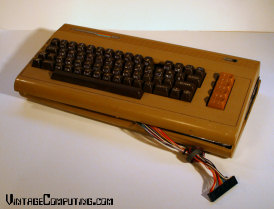 I have a box of about eight musty, “doorstop quality” Commodore 64’s (C64) and VIC-20’s sitting up in my attic. They came from a local hamfest a few years ago. It was getting late in the show that day and the vendors were tired and wanted to go home. At the end of any hamfest, vendors have tons of near-worthless, unsold, bulky junk that they’d usually rather throw away than drag back to their car. I have been stuck in a situation at least four or five times where I was interested in buying one item, but would only be allowed to purchase the item if I agreed to haul off all kinds of other crap for the seller. In this case, I just wanted to buy a single box of C64 disks that I noticed sitting on a table, but the guy would only sell it to me if I agreed to take six C64s, five Vic-20s, a few disk drives, lots more accessories and carts, and…well, there wasn’t just one box of disks, after all, but more like ten. It was like some Vaudeville routine: as soon as I thought the seller had pulled the last box of Commodore-spew from under the table and turned to leave, he’d say “oh wait!” and pull out another one. At this point my father, who was saddled with the unenviable task of helping me carry all these musty artifacts to our car, had a severe grimace on his face. That day I inherited some guy’s entire Commodore collection for $10, including his massive anthology of pirated C64 game disks (complete with a thick three-ring-bound index to the disks!), and I think my dad inherited some permanent “Commodore grimace” lines in his forehead.
I have a box of about eight musty, “doorstop quality” Commodore 64’s (C64) and VIC-20’s sitting up in my attic. They came from a local hamfest a few years ago. It was getting late in the show that day and the vendors were tired and wanted to go home. At the end of any hamfest, vendors have tons of near-worthless, unsold, bulky junk that they’d usually rather throw away than drag back to their car. I have been stuck in a situation at least four or five times where I was interested in buying one item, but would only be allowed to purchase the item if I agreed to haul off all kinds of other crap for the seller. In this case, I just wanted to buy a single box of C64 disks that I noticed sitting on a table, but the guy would only sell it to me if I agreed to take six C64s, five Vic-20s, a few disk drives, lots more accessories and carts, and…well, there wasn’t just one box of disks, after all, but more like ten. It was like some Vaudeville routine: as soon as I thought the seller had pulled the last box of Commodore-spew from under the table and turned to leave, he’d say “oh wait!” and pull out another one. At this point my father, who was saddled with the unenviable task of helping me carry all these musty artifacts to our car, had a severe grimace on his face. That day I inherited some guy’s entire Commodore collection for $10, including his massive anthology of pirated C64 game disks (complete with a thick three-ring-bound index to the disks!), and I think my dad inherited some permanent “Commodore grimace” lines in his forehead.
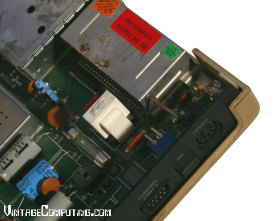 I climbed up into my fiberglass dust-ridden attic the other day, looking for an ideal donor of a 6510 processor to add to my CPU collection. Temptingly, in my Commodore box there was a C64 already apart and in pretty bad shape — an ideal sacrificial Commie to dissect. Upon bringing it down and looking inside the case, I found something pretty amusing: some guy — presumably the previous owner — was fiddling with the power connector in the unit and somehow broke the ground contact and corresponding pin off the connector. It looks to me like he was in the middle of laboring to remove the connector when he was abruptly struck with Sudden Onset Lack-Of-Patience Disorder (or SOLOPD, a common affliction amongst electronics tinkerers). Soon after, his strategy for connector removal became “rip it off any way you can.” Unsurprisingly, he broke his machine in the process. Through the magic of literary time travel, we can infer what obviously happened afterwards as he attempted a repair:
I climbed up into my fiberglass dust-ridden attic the other day, looking for an ideal donor of a 6510 processor to add to my CPU collection. Temptingly, in my Commodore box there was a C64 already apart and in pretty bad shape — an ideal sacrificial Commie to dissect. Upon bringing it down and looking inside the case, I found something pretty amusing: some guy — presumably the previous owner — was fiddling with the power connector in the unit and somehow broke the ground contact and corresponding pin off the connector. It looks to me like he was in the middle of laboring to remove the connector when he was abruptly struck with Sudden Onset Lack-Of-Patience Disorder (or SOLOPD, a common affliction amongst electronics tinkerers). Soon after, his strategy for connector removal became “rip it off any way you can.” Unsurprisingly, he broke his machine in the process. Through the magic of literary time travel, we can infer what obviously happened afterwards as he attempted a repair:
There he was, cradling the lifeless body of a broken C64 in his arms, crying and cursing himself for his impatience and uneven temperament. He broke down on his knees and swore to the heavens to never harm another 64 again if only the Commodore Gods would ease his suffering and forgive him for his mistake. But alas — his cries of desperation fell only on deaf ears (the 22 year-old family cat). And like any man whose most desperate call goes unheard, something turned inside him. For a brief moment, all that was dark and cruel welled up within him, twisting his soul in queer ways as a streak of fiery evil flashed over his hollow eyes. He raised his arms, clutching the helpless computer over his head, and nearly bashed the faulty unit into the darkest form of oblivion. But at the last moment, something stopped him: a key from the unit fell to the floor beneath him. It was the “plus” key — the very first key he pressed on the greatest day of his life. Vivid images of his 15th birthday flooded his head, filling him with a deep sense of regret over what he almost did. It was on that day that he received the very machine he was clutching from his late grandfather. How could he forsake old Roy — always happy, smiling, and helpful — and the desire for a better life that he handed down to his only grandson in the form of a $300 personal computer? It was then that the man decided that he should spare the machine; he would fix it. But how would he achieve such an impossible task? He didn’t have any spare C64 power connectors, and, after all, replacing the connector required removing the old one — the very problem that got him into this mess to begin with! Frantically searching for a solution, he scratched through his junk box until his fingers nearly bled. In the dustiest, farthest back corner of his tattered box, he found it: a nail. Yes! He thought back to his summer job as a carpenter with his grandfather’s construction business — lesson number one in his carpentry training taught him that a common picture frame-hanging wall nail, when used properly, was the perfect solution to any troubling situation. He quickly put his MacGyver-like improvisation skills to work, firing up his soldering iron to melt the broken connector’s mangled plastic and fuse the nail in place. After an intense four-hour operation with many close-calls and stressful moments, he was finished. He plugged the proper power supply into the machine and, with great tension, flipped it on. Tears of joy streamed from his reddened, tired eyes as he saw the bright, vibrant power LED light up. “If only Papa Roy were here to see this,” he thought, as he ran his hand across the smooth back of his favorite machine. “May this heavy light that shines upon me forever serve as a beacon, steering and guiding me through the foggiest, darkest, and stormiest nights of my life.” The ordeal was finally over, and he knew he would never be the same man again.
Yes, he used a nail to act as a ground contact, bridging the outer ground ring of the C64’s DIN power connector and the RF shielding of the cartridge port. Does it really work? I don’t know; I don’t care to try. Personal revelations for the man aside, this has to be the messiest improvised hack I’ve ever seen in my life. At least we got a good story out of it.
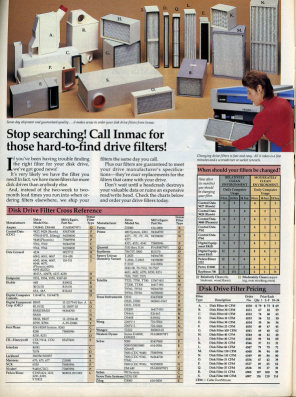
Somebody pinch me.
I know; the title is not really saying a lot. Who needs a DVD player in their NES? Well, nobody really. But it sure is fun to see what you can cram inside a NES case and make it still look as much like an authentic NES as possible. It was only after I completed this hack that I bothered to see if anyone had done something similar before. It turns out that somebody has, but in my totally biased opinion, not nearly as well.
Despite my pride in my creation and the “ultimate” in the article title (I like to exaggerate sometimes for dramatic effect), it doesn’t mean that a NES DVD player design couldn’t be improved. I am particularly proud of my unit’s exterior — how the NES’ look and feel was preserved without drastic interruption. However, the internals could have probably been pulled off with a lot more elegance if one had better tools, better materials, and more experience in doing this sort of thing. All that being said, here are some nice features of my particular NES DVD Player:
Now with all of that out of the way, sit down, relax, and I’ll tell you the story of how I made this beast.
Prepare for lots of pictures after the break…